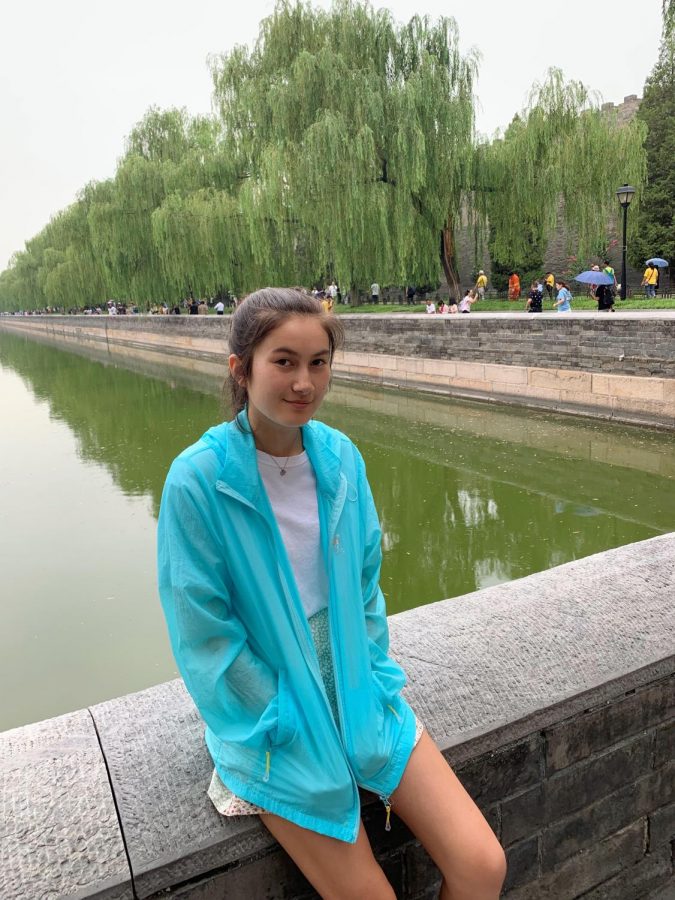Struggles of being bi-racial
Being bi-racial in our society is viewed as being genetically beautiful, when Sofia moved to Iowa she noticed that she changed the way she acts around her family and friends. As she grew older, this mindset became a part of her, as an everyday lifestyle. She feels as if when she’s with different people, with different racial backgrounds she has to act and say things that wouldn’t make them uncomfortable, “I’m balancing so many people at once.” Sofia is now 14 and tries to always be herself no matter who she’s around but always knows her limits on certain topics.
Being bi-racial has both positive and negative effects on someone’s life. People inherit genes that can make them look like both races, but what most people don’t know about being bi-racial is that you don’t always fit in a lot. For Sofia Wells-Lu ’23, being bi-racial isn’t a positive or negative trait.
Wells-Lu was already used to the fact she had to change herself around her friends and family.This isn’t a normal thing to feel at such a young age. Studies show that bi-racial teens are more likely to feel isolated, because of not knowing where to fit in.Being bi-racial can also make you feel isolated, not knowing where you fit in, in your own family.
Wells-Lu is a mixed Asian-American 14-year old who has found interest in extracurricular activities including marching band, debate, and drawing,She also enjoys taking pictures of things she finds interesting while traveling. “Sofia is a person with depth, immense creativity, capacity for joy, and strong sense of self-possession.” Said he Mother,Kun-Hong Lu.
As a mixed teen she looks “mostly white,” she said. On her mother’s side she is Chinese, and on her father’s side she is White (American). Her life at home isn’t what she calls “the typical Asian style home” Sofia said; it is mostly culturally influenced by American culture. Sofia and her parents are atheists,“There’s lots of Chinese wall hangings and stuff,” Sofia said. “I don’t really notice them anymore, but they’re definitely there.” Her family also has the “no shoes in the house’’ rule,
although her family doesn’t do any traditional Asian gatherings, Sofia says one of the most common things they do in her house is eating a “crap ton of rice”.
Sofia feels as if she can be herself at home, around her parents and siblings, but when she is at her mother’s side of the family (Chinese) she feels like she stands out more because of her physical features which make her look more foreign.
When Sofia is with her Chinese relatives or friends, they’d say things like,”That is so white”, and she’d have to change the way she talked or thought about somethings, Although on her Father’s side she can fit in more, they’d still say things like “that is so Asian.”
At school, with her friends, Sofia feels as if people interact with her based on what they think she is.
One of the struggles of being bi-racial is, being recognized incorrectly, Sofia says that people automatically identify her as white because of her physical features. Although she was once identified as Indian-American when she was playing at the playground in 4th grade.
One of her close friends, Zoe Scott 23’ who she met in eighth grade,
“We had classes together, and so we saw each other a lot.” When asked if Sofia’s race was a surprise to her Zoe said , “I wasn’t surprised when i found out” “she kind of has features from both.”
Zoe continues by saying that Sofia’s personality does not change, “She is very unique, she inspires me to be more artsy.”
For Sofia Wells-Lu, being bi-racial has it’s benefits, like having two different cultures to lean more about.
It can also be negative, by feeling isolated and not knowing where to fit in.
